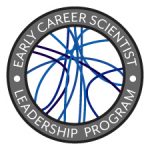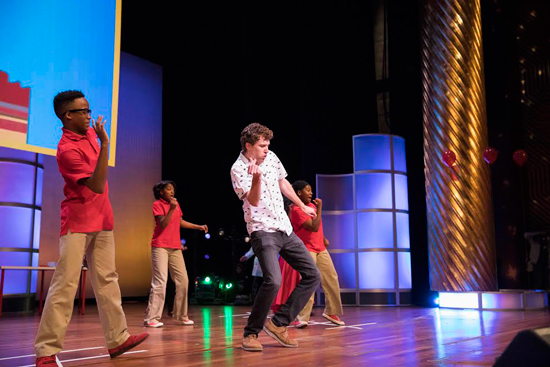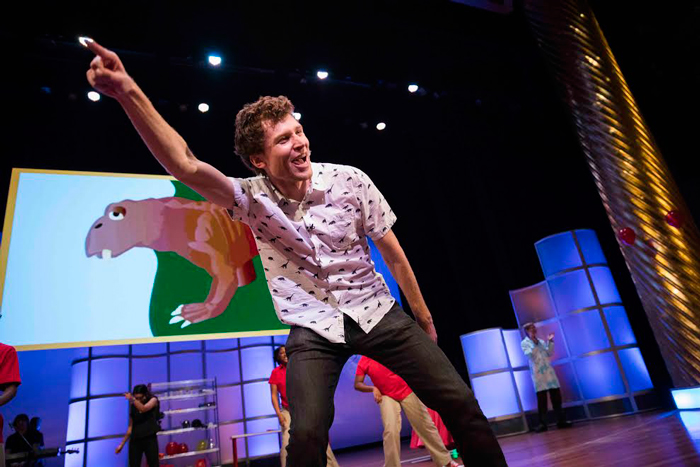 Tom McFadden, science rapper and middle school science teacher, talks about the challenge of generating YouTube content that stimulates participation, and how scientists can improve their outreach ideas.
Tom McFadden, science rapper and middle school science teacher, talks about the challenge of generating YouTube content that stimulates participation, and how scientists can improve their outreach ideas.
In the Decoding Life series, we talk to geneticists with diverse career paths, tracing the many directions possible after research training. This series is brought to you by the GSA Early Career Scientist Career Development Subcommittee.
How did you become a science rapper?
After graduating with my interdisciplinary undergraduate degree in Human Biology from Stanford, I was hired to be on the teaching staff for the “Introduction to Human Biology” course. We explored a lot about pedagogy and how to provide a really good introductory science class. I started to draw inspiration from the things I loved growing up, Bill Nye, Weird Al, and hip-hop, and it seemed like a no brainer to combine my love of music, making videos, and education. My first work was just barely good enough that the students thought it was interesting, and it created a positive cycle where I kept putting more effort into each video. Then I got featured in an NYT blog and had my first experience going “viral,” which set me on this bigger course where I realized I could reach a larger audience.
I originally went by the name “Rhymbosome.” The science people really loved it, but they couldn’t spell it. Around 2013, YouTube headquarters assigned me a coach to rebrand my YouTube channel, and “Science with Tom” came out of that. It was becoming more than a side passion project, and I needed money. I was able to get grants from the New School Venture Fund and 4.0 Schools, which are NGOs interested in scaling up cool ideas in education. These funds really forced me to get outside of my comfort zone and truly into creating content for schools at a larger level. Now I focus on exploring how you can have an in-person hands-on experience with a small group of students that generates content that can serve a much larger audience.
Why middle school?
 I received a Fulbright scholarship and went to New Zealand to study science communication. I showed up and they put me on a tour of middle schools around the country, performing my undergraduate level songs. I realized then that middle school is a really interesting time to get students interested in science. When I returned to the US, I went to different schools to make videos, which were funded by small grants. As I was doing that, I realized that I wanted the experience of teaching middle school science.
I received a Fulbright scholarship and went to New Zealand to study science communication. I showed up and they put me on a tour of middle schools around the country, performing my undergraduate level songs. I realized then that middle school is a really interesting time to get students interested in science. When I returned to the US, I went to different schools to make videos, which were funded by small grants. As I was doing that, I realized that I wanted the experience of teaching middle school science.
The former 8th-grade science teacher at The Nueva School (where I work now) had been using my Oxidate It or Love It video, and the kids knew every single word when I went in to perform. I decided that even though my goal is to be part of the public school system in the long term, taking advantage of the opportunity to see what it was like to teach at a private school would be a valuable experience.
How has your experience as an educator informed “Science with Tom”?
At the beginning of my science rapping career, I was making music videos that would help kids memorize things like the citric acid cycle. The more I learn about education, the more I’m realizing that helping memorization isn’t actually that useful. I’ve been striving to figure out how to create tools and videos that stimulate student creation. I’ve shifted from making content that can be passively consumed in a classroom to trying to make content that stimulates active participation, which is thousands of times harder, and way more exciting and interesting to me.
Science is changing at an amazing pace. What challenges and opportunities do you think this presents to you and your work, and how are you preparing for this new world?
The biggest challenge in teaching science is how to convey the fact that it is a constantly changing dynamic set of processes that allows us to better understand our world. When a field feels static, it gives people the sense that science is a set of facts that have been handed down. I’m preparing for changes in scientific knowledge by staying connected to scientists, and being part of helping scientists do broader outreach.

Tom McFadden performing at the World Science Fair in NYC.
Do you have advice for anyone who is trying to come up with an outreach program?
It’s important to know your audience and what is meaningful to them. You have to start at a place where they have an access point, for example, tapping into popular songs adds to the audience’s experience. You may not know what mitosis is, but if you know “Hotline Bling” and watch “Mitosis bling,” you can feel like you are in on the joke, even if you don’t know the science.
I recommend trying out your ideas with a small audience, and work through an iterative process to try out different messages and see what connects best with the audience. It’s also important not to assume that your first idea will be great, and to pivot to the things that actually work. One of the goals of “Science with Tom” is to consult and produce science outreach content for scientists. If anyone wants to talk to me or collaborate, please contact me by email.
What would your ideal clock look like?
I think time is really subjective in how you experience it, and the clock pulls you out of that flow of your own internal perception of time. My ideal clock would be dynamic, and at different moments I would be able to change the number of arms based on the different approaches to time that I would need in different situations. It would not have information about the year or the month. To me, it’s really appealing to live in the moment and try to soak up your surroundings and leave with whatever comes your way.
About the author:
![]() Didem Sarikaya is the co-chair of the Early Career Scientist Career Development Committee and an FRSQ Postdoctoral Fellow at University of California Davis. She is committed to bringing forward stories and tools for trainees to learn more about career options so they can develop personally meaningful career trajectories.
Didem Sarikaya is the co-chair of the Early Career Scientist Career Development Committee and an FRSQ Postdoctoral Fellow at University of California Davis. She is committed to bringing forward stories and tools for trainees to learn more about career options so they can develop personally meaningful career trajectories.
Learn more about the GSA’s Early Career Scientist Leadership Program.













